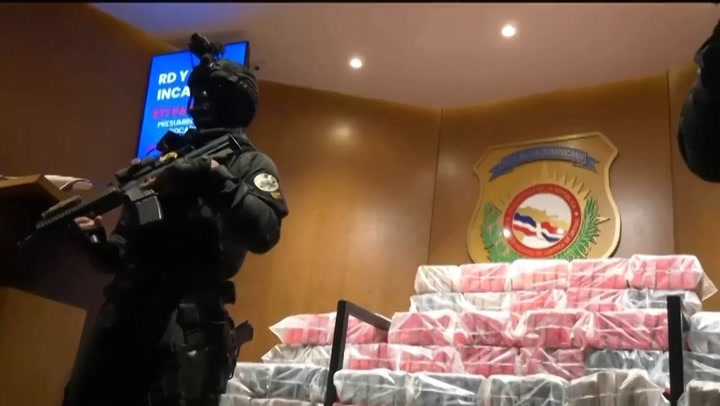The Dominican Republic’s authorities announced they seized 377 packages of cocaine from a speedboat that U.S. Navy forces destroyed during a joint anti-narcotics mission. They said the boat carried about 1,000 kilograms of cocaine before its destruction. The vessel went down roughly 80 nautical miles south of Isla Beata. Dominican and U.S. naval forces worked together to locate the boat because they believed traffickers planned to use the country as a transit point for drugs headed toward the United States.
Details of the Joint Operation
Officials said that Dominican navy ships, alongside U.S. naval assets, intercepted the speedboat after tracking its route across international waters. They added that the boat attempted to reach Dominican shores. After destroying the speedboat, authorities retrieved the cocaine packages undamaged enough for identification. Because of this seizure, Dominican forces demonstrated increased capability and willingness to act in cooperation with foreign partners.
Furthermore, government officials declared this action marks the first time in history that the United States and the Dominican Republic carried out a joint operation specifically against narco terrorism in the Caribbean. The directorate responsible for drug control emphasized that similar collaborations could become more common, especially given growing concerns over maritime drug trafficking routes.
Broader Context and U.S. Policy
Since August, the Trump administration has intensified its naval presence in the southern Caribbean. They deployed eight warships and a submarine to counter drug trafficking. They also destroyed multiple drug laden speedboats in separate strikes, according to statements from U.S. and Dominican authorities. Critics raised concerns over human rights, particularly about deaths on those boats. Meanwhile, U.S. officials charged that at least two of the destroyed vessels originated from Venezuela, where government leaders strongly deny such claims.
Implications for Drug Trafficking and Regional Security
Because of this latest seizure, traffickers may face a higher risk on Caribbean routes. The joint U.S.-Dominican operation signals stronger regional enforcement. Also, authorities hope they can deter future smuggling attempts. For local populations, the seizure may offer reassurance that government and international partners are actively working to block drug flows.
However, critics question whether strikes and destructions alone solve deeper issues. They argue that more comprehensive approaches, such as improving intelligence sharing, maritime patrols, and social programs, must accompany military actions. Transitioning from reactive strikes to pro active prevention could reduce drug-related violence and corruption over time.
What’s Next
Authorities in the Dominican Republic plan to continue cooperation with U.S. naval forces. They also intend to inspect remaining routes and monitor suspicious vessels more aggressively. On the legal front, they will process those responsible, both for the smashed speedboats and the trafficking networks behind them. Meanwhile, human rights groups demand transparency over how operations occur, ensuring that any civilian risks or collateral damage are fully investigated.
Bonus Read: How a Nigerian Hacker Stole $235,000 from a U.S. University Contractor



